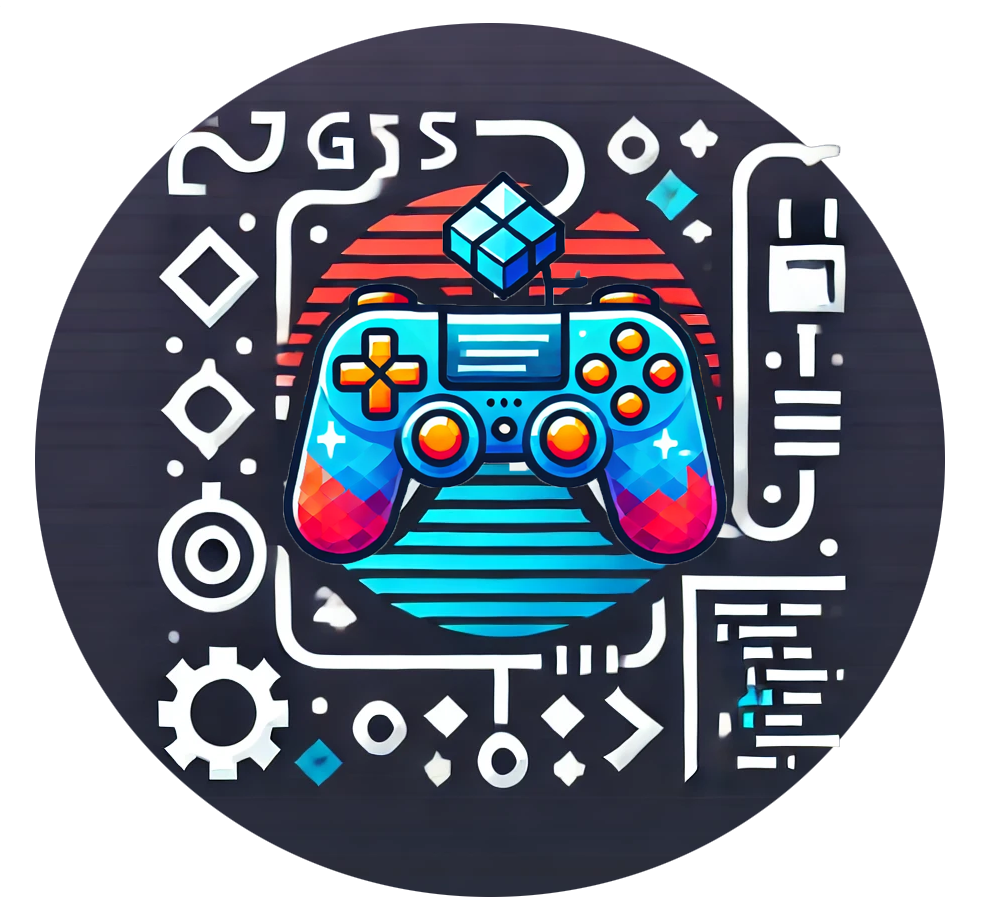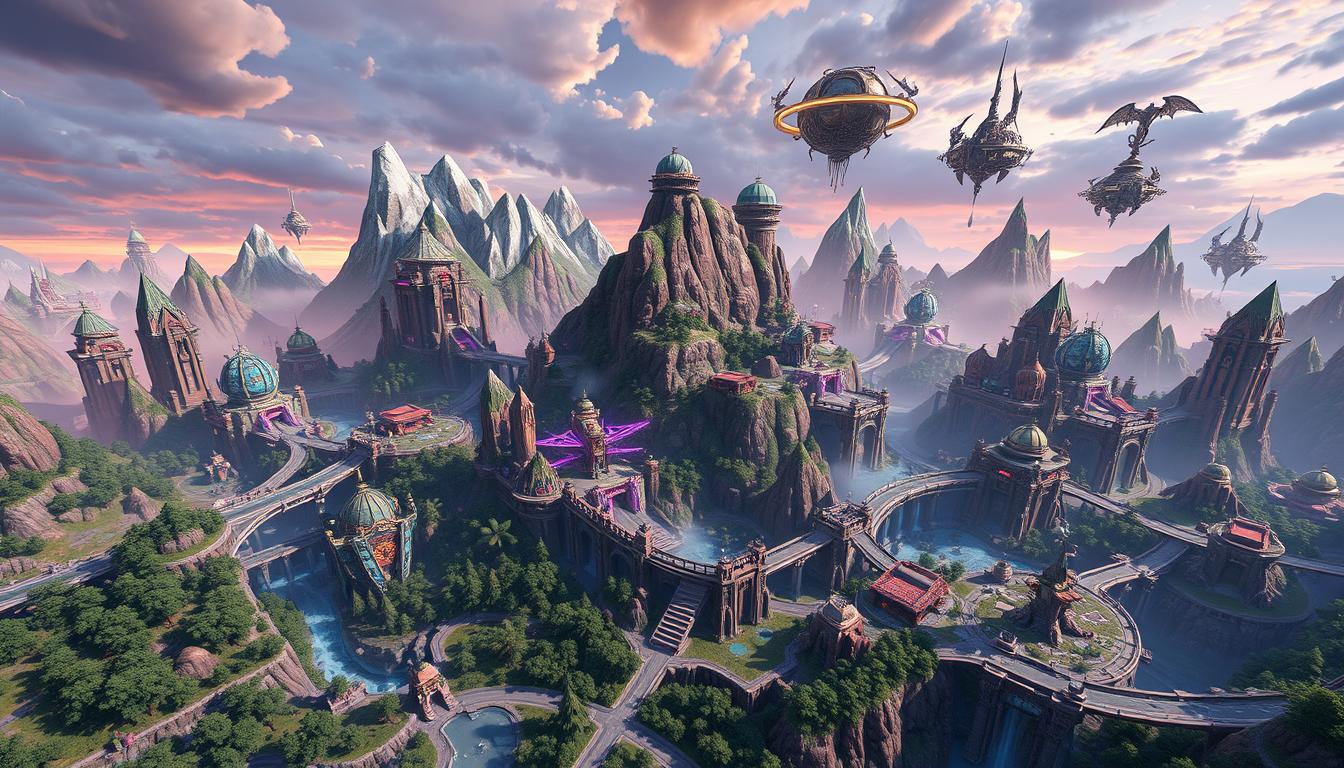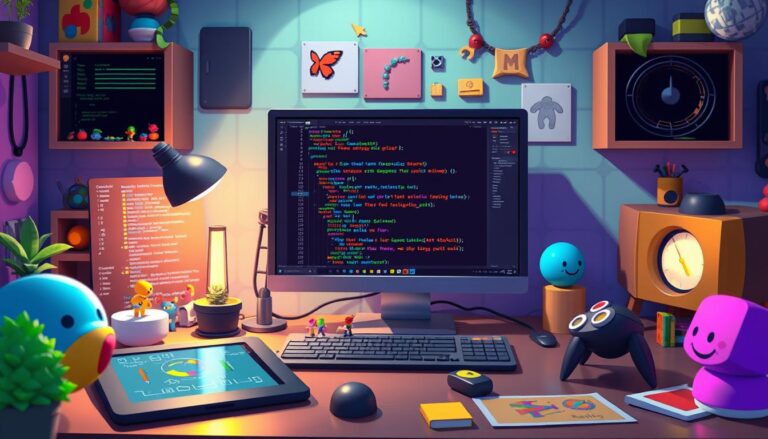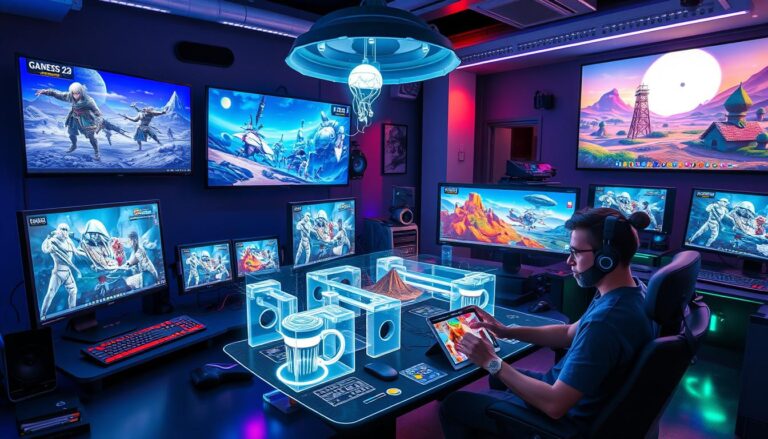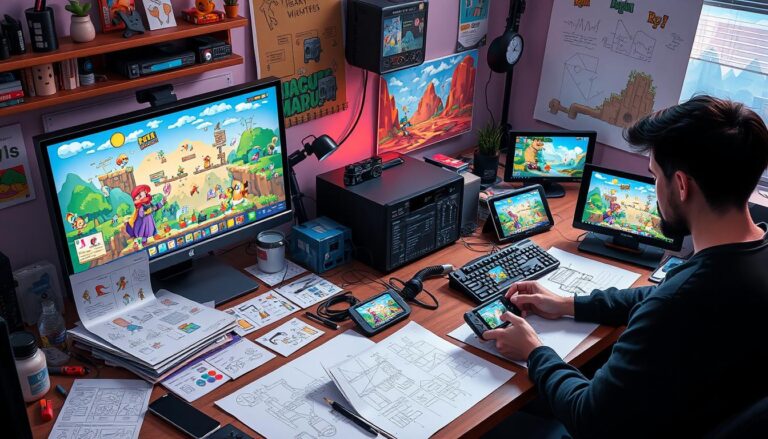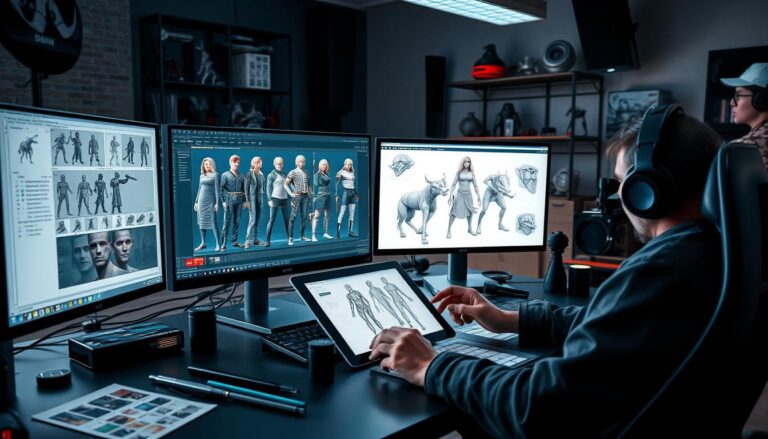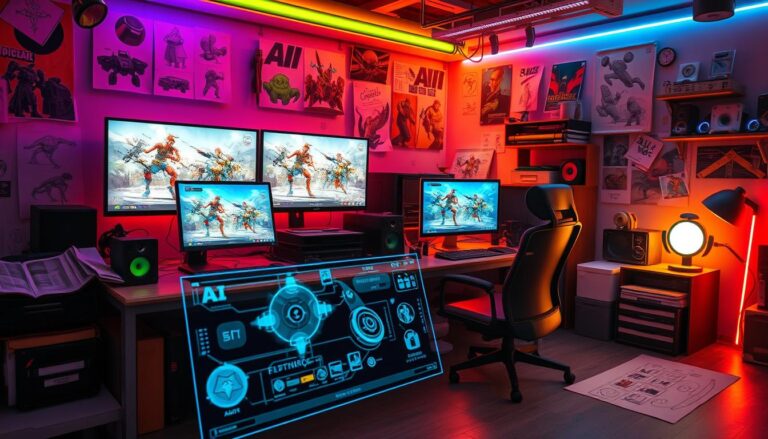How Can You Design Complex 3D Game Worlds?
Gaming has become a global phenomenon, with over 40% of the world’s population identified as gamers in 2021. The industry continues to thrive, with more than 10,000 games released on Steam alone in 2021. In this competitive landscape, creating immersive and compelling 3D game environments is crucial for capturing players’ attention and creating a memorable experience.
Designing complex 3D game worlds involves a multi-stage process, from conceptualization to integration and testing. Art and design are at the heart of this process. They help establish the game’s visual style and create 3D models and environments. They also add textures and lighting, create animations and effects, and shape the sound design.
Attention to visual detail is essential. The visualization of the game world through these elements is key to creating an immersive and realistic gaming experience.
Playtesting during the integration and testing stage is also crucial. It allows game developers to refine the game world based on player feedback. It helps identify and fix any issues that arise. By addressing these crucial elements, game developers can create virtual worlds that captivate and engage players, making them an integral part of the gaming experience.
Understanding the Foundation of 3D Game Development
In the world of 3D gaming, the basics are key. Texture Mapping, Animation, and Level Design are the building blocks. Together, they create the virtual worlds that players love.
Core Elements of Game World Creation
Building 3D game worlds is complex. It involves several important steps:
- Modeling and sculpting 3D objects, characters, and environments
- Applying realistic Texture Mapping to create visual depth and detail
- Implementing dynamic Animation to bring characters and objects to life
- Designing intuitive Level Design that guides players through the game world
- Integrating lighting, physics, and special effects for a heightened sense of realism
The Role of Environmental Design
Environmental designers are vital in 3D game worlds. They use worldbuilding, concept art, and 3D modeling to create immersive settings. Their work brings the game world to life, from vast open worlds to detailed levels.
World Design vs. Level Design
World design and Level Design are closely related but different. World design focuses on the setting, lore, and themes. It creates a believable universe for players to explore.
Level Design deals with individual stages or levels. It crafts player progression, challenges, and moments of discovery. Good world design immerses players, while effective Level Design keeps them engaged and satisfied.
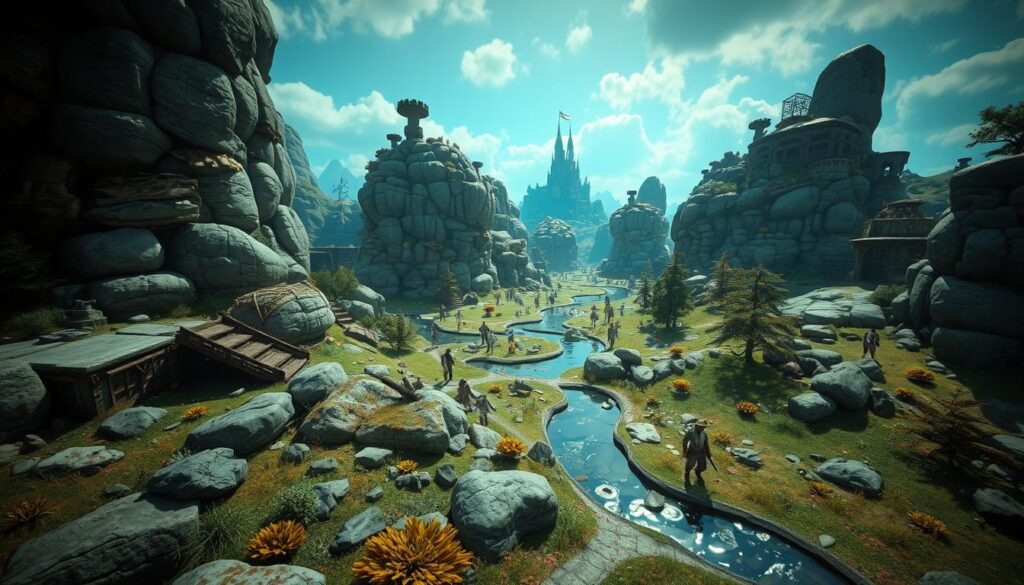
Essential Tools and Software for 3D Environment Creation
To create amazing 3D game worlds, you need a wide range of tools and software. At the core are powerful 3D modeling tools like Autodesk Maya, 3DS Max, and the free Blender. These tools help artists make detailed environments and bring their ideas to life.
Texture creation is key, and top apps like Adobe Photoshop lead the way. But, free options like Krita and GIMP also offer great texture painting. For detailed modeling, ZBrush is the top choice, allowing for incredible detail and realism.
Integrating these 3D assets into a game world is done with Unity and Unreal Engine. These platforms offer top-notch rendering and lighting, along with easy level editors. Tools like Substance Painter are also great for texturing and materials, using PBR workflows.
Being skilled in Shader Programming and 3D Modeling is vital for 3D environment artists. Knowing these areas well helps create stunning and engaging game worlds. By always learning and staying updated, artists can make incredible game environments.
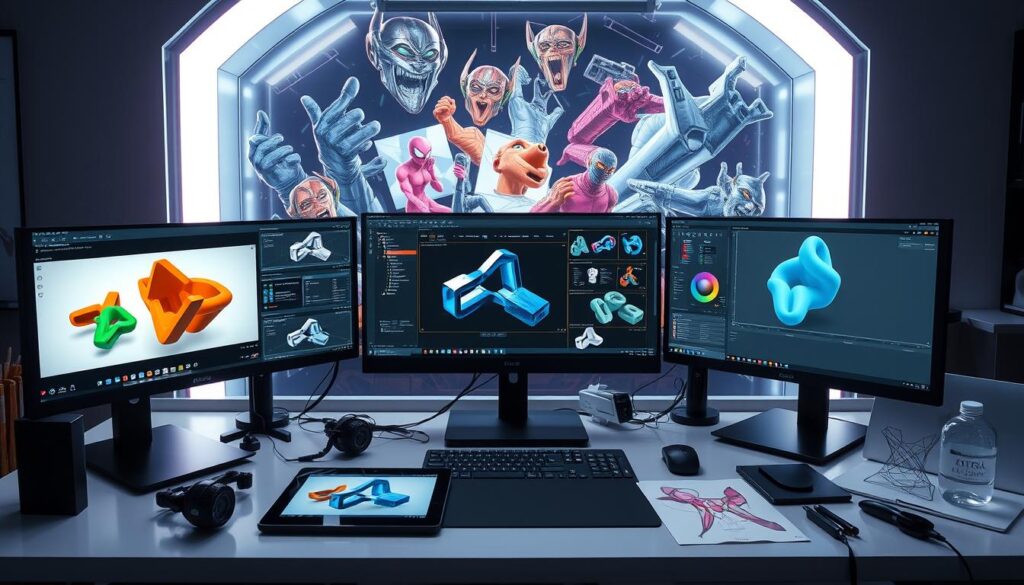
Professional Workflow in Game World Development
Making 3D game worlds is a detailed task that needs a clear plan. This plan includes reference collection, conceptualization, asset creation, and optimization. A team of artists and designers work together to make the game world real.
Reference Collection and Conceptualization
The first step is to find pictures that inspire the game’s look. Then, artists sketch out ideas and explore different themes. This greyboxing phase helps set up the game world’s basic structure.
Asset Creation and Implementation
After the basics are set, the team starts making game assets. Modelers, texture artists, and lighting experts work together to create the game’s elements. They make sure everything looks good together and fits the game’s story.
Optimization and Performance Testing
As the game world grows, the team must balance looks and performance. Optimization is key to keep the game running well. They check the game’s Scripting and User Interface Design to fix any problems.
This structured approach helps game developers make amazing 3D worlds. These worlds draw players in and make the game’s story come alive.
Creating Immersive Game Environments
Making game environments that pull players in is key in today’s gaming world. Designers need to mix tech skills with creative vision. This way, they build virtual worlds that grab players and make games better.
Using Game Physics and User Interface Design is crucial. Advanced physics and AI make games feel real. Good UI lets players move around easily and interact with the game.
Tools like volumetric lighting and procedural generation make games look and feel real. Teams of artists, animators, and engineers add life to these worlds. They create details and visuals that draw players in.
New tech like VR and AR takes immersion to the next level. These platforms make players feel like they’re part of the game. It mixes the digital and real worlds in a new way.
The main goal is to make players feel something. It’s about connecting with the game world. By blending tech and art, developers create unforgettable experiences.
| Project | Immersive Game Elements | Impact |
|---|---|---|
| Cyberpunk 2077 | Environmental storytelling, diverse districts | Reveals the city’s history and social issues |
| NieR: Automata | Open-world design, hidden lore, multiple endings | Encourages player exploration and discovery |
| Sea of Thieves | Diverse environments, social interaction | Keeps gameplay fresh and exciting |
| Devil May Cry 5 | Focused narrative path, memorable set pieces | Provides a seamless and captivating experience |
Conclusion
Creating complex 3D game worlds is a mix of creativity, technical skills, and knowing what players like. It takes learning many tools and techniques, from the first sketches to the final touches. Making games that feel real, look great, and are fun to play is key in today’s gaming world.
As tech gets better, 3D artists need to keep learning and growing. The gaming world is booming, with VR and AR games showing how important 3D skills are.
Working with top game engines like Unity or Unreal, or even open-source options like Godot, can lead to exciting opportunities. It can lead to a fulfilling career in game studios or the joy of making and sharing your own games. The future of gaming looks bright for those with 3D game development skills.
